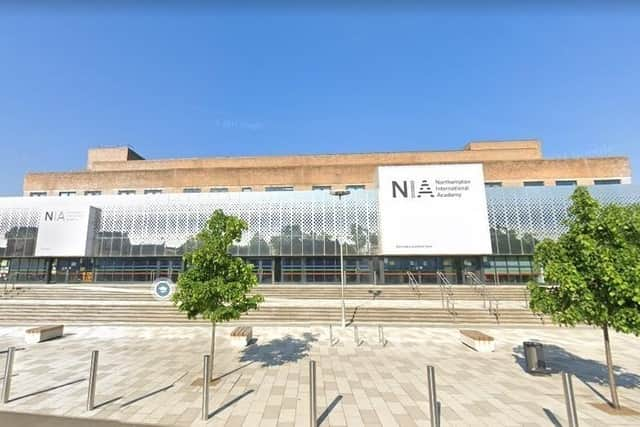Access restricted to part of Northampton school building after government issues concerns
and live on Freeview channel 276
Access has been restricted to part of one Northampton school building, following concerns issued by the Department for Education about the use of a particular building material.
The top floor of Northampton International Academy, including 18 classrooms, the sixth form area and a staff room, will not be in use while precautionary survey work is carried out.
Advertisement
Hide AdAdvertisement
Hide AdThis information has come to light following a new approach by the government’s Department for Education to managing a building material found in education settings – known as Reinforced Autoclaved Aerated Concrete (RAAC).


Martin Serráo, executive headteacher of Northampton International Academy, said: “We are one of over 100 schools across the country which may have reinforced autoclaved aerated concrete (RAAC) within its structure, in our case in the roof of the building.
“In line with guidance from the Department for Education, we have commissioned a structural survey to confirm whether RAAC is present in the roof and while this survey is carried out, the use of the top floor is being restricted.
“This is a precautionary measure and the school building is entirely safe for pupils, staff and visitors.
Advertisement
Hide AdAdvertisement
Hide Ad“While other schools with confirmed RAAC throughout their buildings have had to close to pupils, we are pleased to confirm that NIA remains open and any remedial works would only affect the top floor of our school.”
The school is currently reviewing timetables to ensure the full curriculum can continue to be delivered to all year groups, meaning no pupils will be affected by the closure of the top floor.
Gillian Keegan MP, the secretary of state for education, confirmed that of the 22,500 schools in England, 156 have RAAC and 52 already have mitigations in place.
RAAC is described by the Department for Education as a “lightweight form of concrete” but is made in a way that makes it “much weaker” than traditional concrete, says the Standing Committee on Structural Safety.
Advertisement
Hide AdAdvertisement
Hide AdThe Department for Education has been providing guidance and funding to manage the potential risks of RAAC since 2018, but new cases have made them “less confident” that buildings containing the material should remain open without extra safety measures in place.
“As a result we’re changing our approach and advising education settings to close any spaces or buildings that are known to contain RAAC to allow them to put mitigations in place,” the Department for Education’s website reads. “This is a precautionary step, but the safety of young people and staff is always our priority.”
This comes after the government sent a questionnaire to all responsible education bodies, asking them to provide information about the use of RAAC.
The Department for Education’s X account says: “In cases as recent as August, buildings containing the material have failed unexpectedly, requiring decisive action in order to keep staff and pupils safe.”
Advertisement
Hide AdAdvertisement
Hide AdGillian Keegan MP says that the majority of the schools impacted will remain open for face-to-face learning for all pupils, as only a small part of the sites are affected.
“Children should attend school as normal in September, unless families hear differently,” her social media statement went on to say.
